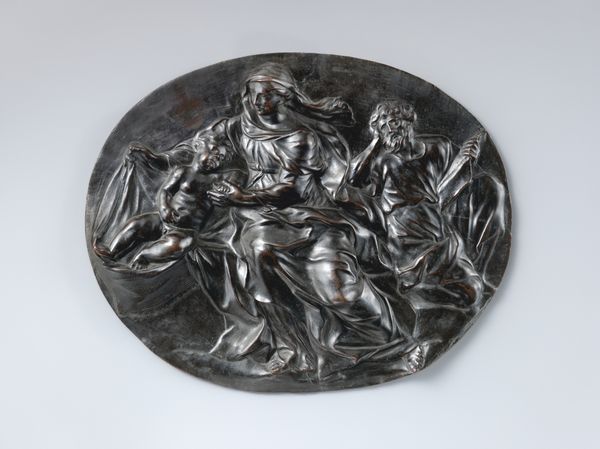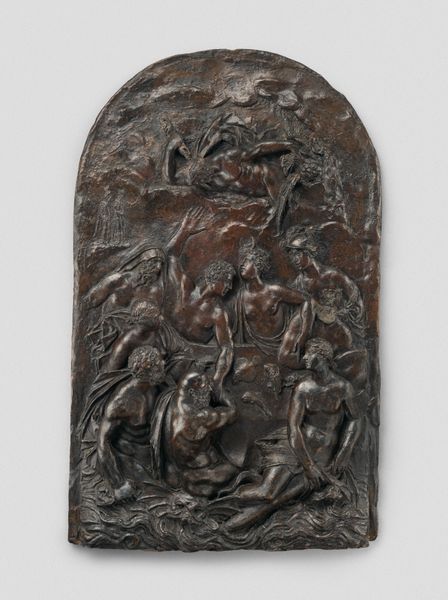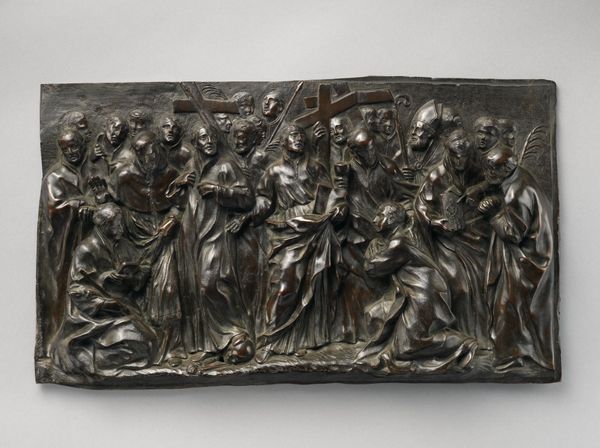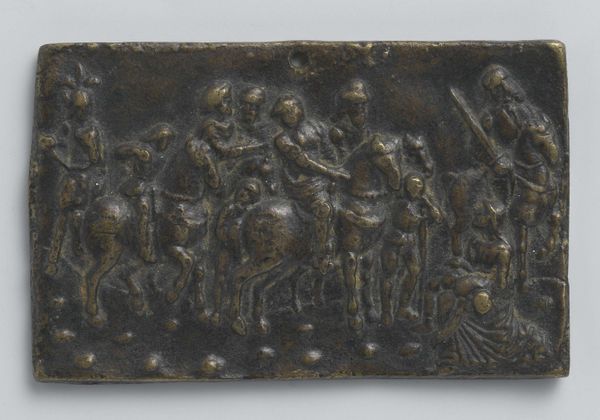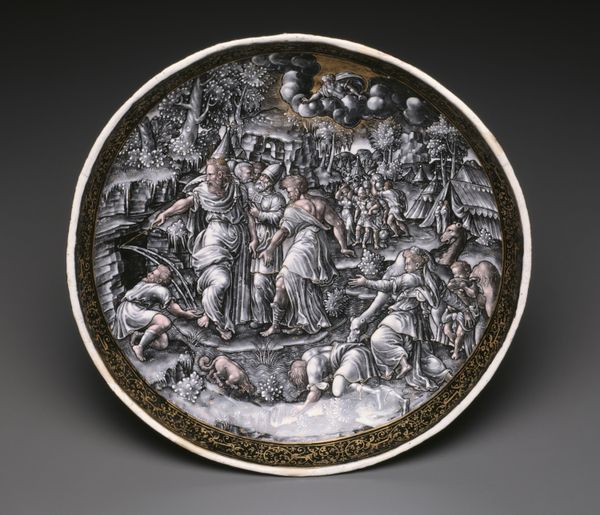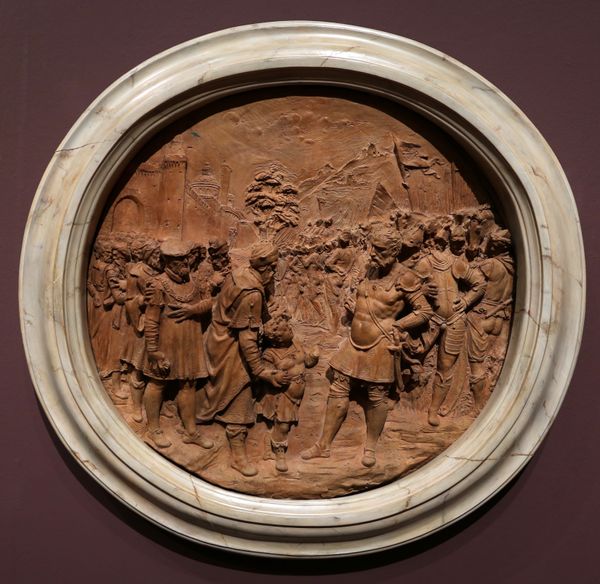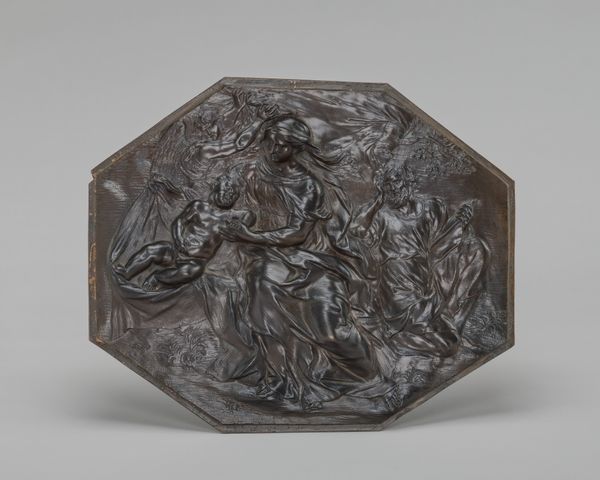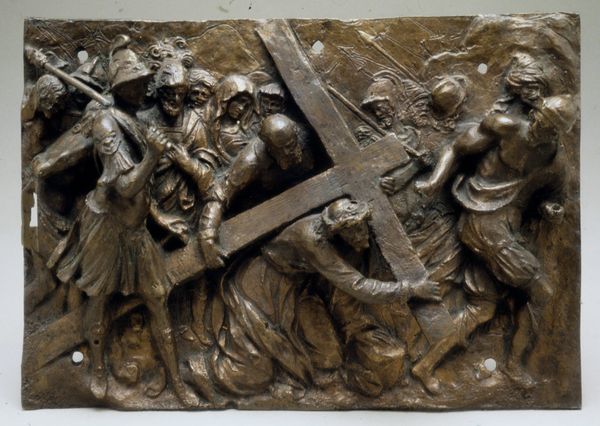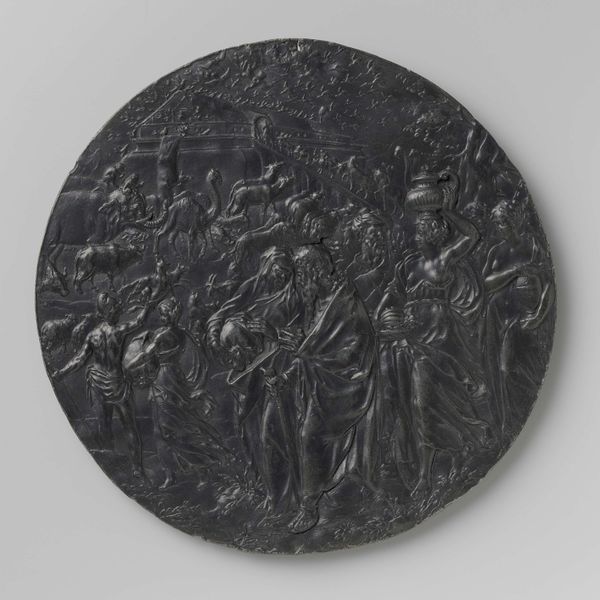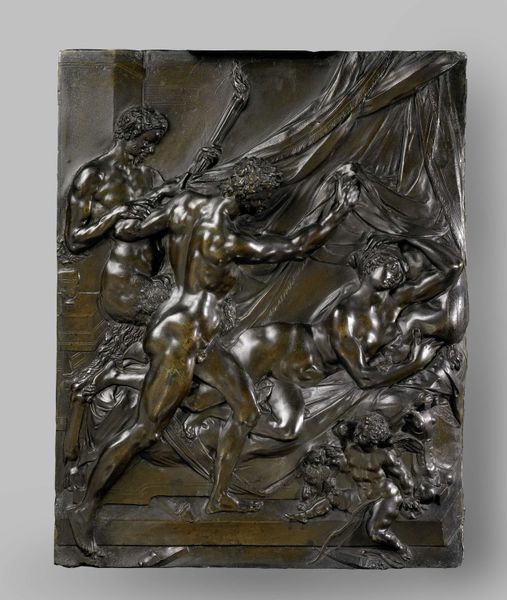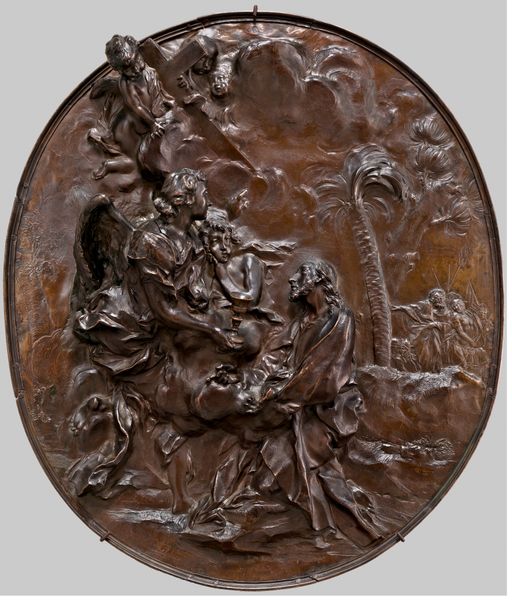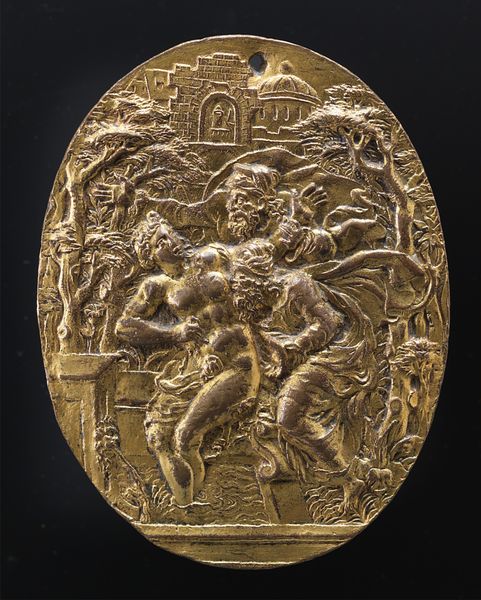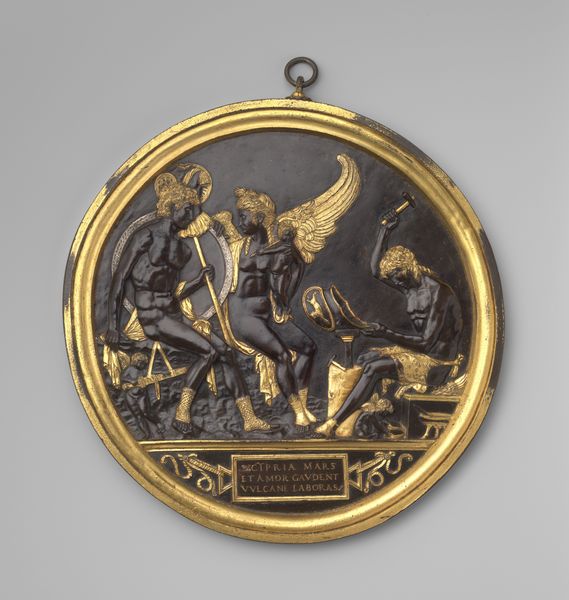
relief, bronze, sculpture
#
baroque
#
sculpture
#
relief
#
bronze
#
figuration
#
sculpture
#
history-painting
#
decorative-art
Dimensions: Overall (confirmed): 6 3/4 × 9 3/4 × 1 3/4 in. (17.1 × 24.8 × 4.4 cm)
Copyright: Public Domain
This bronze relief depicting Christ bearing the cross was made by Ferdinando Tacca, a Florentine sculptor, in the 17th century. Bronze casting is an indirect process. Tacca would have started by sculpting a highly detailed model, likely in wax or clay. This was then used to create a mold, into which molten bronze was poured. Once cooled, the mold was broken away to reveal a rough casting, requiring extensive chasing and finishing to achieve the final effect. The warm, lustrous surface of the bronze lends a sense of drama to the scene, capturing the emotional intensity of Christ's suffering. The use of bronze elevated this relief beyond the realm of the everyday, signaling its value as a precious object. The skilled labor involved in bronze casting, from the initial sculpting to the final polishing, reflects the social and economic context of artistic production in early modern Florence. Considering the material and the making of this artwork allows us to appreciate the artistic skill involved and the wider cultural values it embodies.
Comments
No comments
Be the first to comment and join the conversation on the ultimate creative platform.
